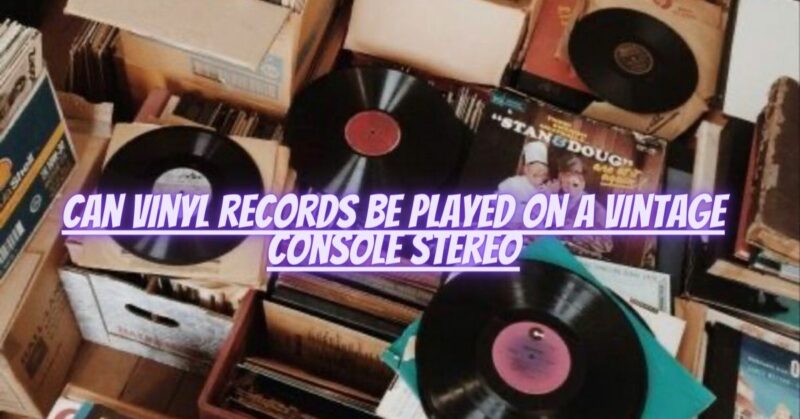Vintage console stereos exude nostalgia and charm, often housing turntables, speakers, and amplifiers in a single unit. If you’ve come across a vintage console stereo and are eager to play your vinyl records on it, there are important factors to consider. In this article, we will explore the compatibility of vinyl records with vintage console stereos, providing guidance on how to enjoy your vinyl collection on these classic audio systems.
Understanding Vintage Console Stereos: Vintage console stereos were designed to provide an all-in-one audio experience, typically featuring a turntable, speakers, and sometimes an integrated amplifier. These systems were popular in the mid-20th century and often came in beautifully crafted wooden cabinets.
Compatibility Considerations: When attempting to play vinyl records on a vintage console stereo, it’s essential to consider the following factors:
- Turntable Condition: Inspect the turntable for any signs of damage, such as a worn-out stylus, misaligned cartridge, or malfunctioning motor. The turntable should be in good working condition to ensure proper playback and prevent potential damage to your vinyl records.
- Speed Settings: Check if the vintage console stereo has the necessary speed settings for your vinyl records. Most vinyl records are either 33 1/3 RPM (standard LPs) or 45 RPM (singles), so ensure that the turntable offers these speed options. If your console stereo lacks the appropriate speed settings, playing records may not be feasible without modifications.
- Tonearm and Tracking Force: Ensure that the tonearm on the vintage console stereo is properly aligned and the tracking force is within the recommended range for your vinyl records. An improperly aligned tonearm or excessive tracking force can cause excessive wear on your records or result in poor sound quality.
- Sound Quality: Vintage console stereos may not deliver the same sound quality as modern audio systems. The speakers and amplifiers in these systems may have limitations in terms of frequency response, dynamic range, and overall fidelity. It’s important to manage your expectations and understand that vintage systems may not reproduce the audio with the same clarity and accuracy as contemporary setups.
Optimizing the Experience: To optimize your vinyl playback experience on a vintage console stereo, consider the following:
- Maintenance and Servicing: Have the vintage console stereo inspected and serviced by a professional technician to ensure it is in good working condition. This includes checking and replacing any worn-out components, calibrating the tonearm, and addressing any mechanical or electrical issues.
- Speaker Upgrades: Consider upgrading the speakers in the vintage console stereo to improve the overall sound quality. Consult with an audio specialist to find compatible speakers that enhance the listening experience while preserving the vintage aesthetic.
- External Preamp: If the vintage console stereo lacks a built-in phono preamp, you may need to use an external phono preamp to boost the signal from the turntable. This will ensure proper amplification and equalization for accurate vinyl playback.
- Care and Maintenance: Regularly clean the turntable, stylus, and records to prevent dust and debris buildup. Keep the console stereo in a clean and dust-free environment to maintain its optimal performance.
Conclusion: Playing vinyl records on a vintage console stereo can bring a unique sense of nostalgia and charm to your listening experience. By ensuring the turntable is in good working condition, verifying speed settings, aligning the tonearm correctly, and considering speaker upgrades or external preamps, you can optimize the playback quality. Remember to exercise caution, seek professional assistance when needed, and enjoy the vintage aesthetic and sonic character that the console stereo brings to your vinyl journey.


